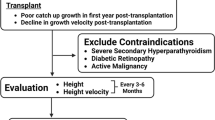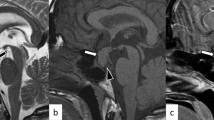Abstract
Hypopituitarism is the partial or complete insufficiency of anterior pituitary hormone secretion and may result from pituitary or hypothalamic disease. The reported incidence (12–42 new cases per million per year) and prevalence (300–455 per million) is probably underestimated if its occurrence after brain injuries (30–70% of cases) is considered. Clinical manifestations depend on the extent of hormone deficiency and may be non specific, such as fatigue, hypotension, cold intolerance, or more indicative such as growth retardation or impotence and infertility in GH and gonadotropin deficiency, respectively.
A number of inflammatory, granulomatous or neoplastic diseases as well as traumatic or radiation injuries involving the hypothalamic-pituitary region can lead to hypopituitarism. Several genetic defects are possible causes of syndromic and non syndromic isolated/multiple pituitary hormone deficiencies. Unexplained gonadal dysfunctions, developmental craniofacial abnormalities, newly discovered empty sella and previous pregnancy-associated hemorrhage or blood pressure changes may be associated with defective anterior pituitary function.
The diagnosis of hypopituitarism relies on the measurement of basal and stimulated secretion of anterior pituitary hormones and of the hormones secreted by pituitary target glands. MR imaging of the hypothalamo-pituitary region may provide essential information. Genetic testing, when indicated, may be diagnostic.
Secondary hypothyroidism is a rare disease. The biochemical diagnosis is suggested by low serum FT4 levels and inappropriately normal or low basal TSH levels that do not rise normally after TRH. L-thyroxine is the treatment of choice. Before starting replacement therapy, concomitant corticotropin deficiency should be excluded in order to avoid acute adrenal insufficiency. Prolactin deficiency is also very rare and generally occurs after global failure of pituitary function. Prolactin deficiency prevents lactation. Hypogonadotropic hypogonadism in males is characterized by low testosterone with low or normal LH and FSH serum concentrations and impaired spermatogenesis. Hyperprolactinemia as well as low sex hormone binding globulin concentrations enter the differential diagnosis. Irregular menses and amenorrhea with low serum estradiol concentration (<100 pmol/l) and normal or low gonadotropin concentrations are the typical features of hypogonadotropic hypogonadism in females. In post menopausal women, failure to detect high serum gonadotropin values is highly suggestive of the diagnosis. In males, replacement therapy with oral or injectable testosterone results in wide fluctuations of serum hormone levels. More recently developed transdermal testosterone preparations allow stable physiological serum testosterone levels. Pulsatile GnRH administration can be used to stimulate spermatogenesis in men and ovulation in women with GnRH deficiency and normal gonadotropin secretion. Gonadotropin administration is indicated in cases of gonadotropin deficiency or GnRH resistance but is also an option, in alternative to pulsatile GnRH, for patients with defective GnRH secretion.
Similar content being viewed by others
References
Lamberts SWJ, de Herder WW, van der Lely AJ (1998) Pituitary insufficiency. Lancet 352:127–134
Regal M, Paramo C, Sierra SM, Garcia-Mayor RV (2001) Prevalence and incidence of hypopituitarism in an adult Caucasian population in northwestern Spain. Clin Endocrinol (Oxf) 55:735–740
Ehrnborq C, Hakkaart-Van Roijen L, Jonsson B, Rutten FF, Bengtsson BA, Rosen T (2000) Cost of illness in adult patients with hypopituitarism. Pharmacoeconomics 17:621–628
Van Aken MO, Lamberts SW (2005) Diagnosis and Treatment of hypopituitarism: an update. Pituitary 8:183–191
Melmed S, Kleinberg D (2003) Anterior pituitary. In: Larsen PR, Kronenberg HM, Melmed S, Polonsky KS (eds), Williams Texbook of endocrinology. Saunders, Philadelphia, pp 176–279
Jostel A, Lissett CA, Shalet SM (2006) Hypopituitarism. In: DeGroot LJ, Jameson JL (eds), Endocrinology. Elsevier Saunders, Philadelphia, pp 397–409
Kelly DF, Gonzalo IT, Cohan P, Berman N, Swerdloff R, Wang C (2000) Hypopituitarism following traumatic brain injury and aneurysmal subarachnoid hemorrhage: a preliminary report. J Neurosurg 93:743–752
Aimaretti G, Ambrosio MR, Di Somma C, Gasperi M, Cannavo S, Scaroni C, Fusco A, Del Monte P, De Menis E, Faustini-Faustini M, Grimaldi F, Logoluso F, Razzore P, Rovere S, Benvenga S, Degli Uberti EC, De Marinis L, Lombardi G, Mantero F, Martino E, Giordano G, Ghigo E (2005) Residual pituitary function after brain injury-induced hypopituitarism: a prospective 12-month study. J Clin Endocrinol Metab 90:6085–6092
Popovic V, Aimaretti G, Casanueva FF, Ghigo E (2005) Hypopituitarism following traumatic brain injury: call for attention. J Endocrinol Invest 28(5 suppl):61–64
Franklin JA (1997) Diagnosis and treatment of thyrotropin deficiency. In: Lamberts SWJ (eds), The diagnosis and treatment of pituitary deficiency. BioScientifica, Bristol, pp 99–109
Roberts CG, Ladenson PW (2004) Hypothyroidism. Lancet 363:793–803
Seminara SB, Acierno JS, Abdulwahid NA, Crowley WF Jr, Margolin DH (2002) Hypogonadotropic hypogonadism and cerebellar ataxia: detailed phenotypic characterization of a large, extended kindred. J Clin Endocrinol Metab 87:1607–1612
Kawai M, Momoi T, Fujii T, Nakano S, Itagaki Y, Mikawa H (1990) The syndrome of Mobius sequence, peripheral neurophathy, and hypogonadotropic hypogonadism. Am J Med Genet 37:578–582
Vermeulen S, Messiaen L, Scheir P, De Bien S, Speleman F, De Paepe A (2002) Kallmann syndrome in a patient with congenital spherocytosis and an interstitial 8p11.2 deletion. Am J Med Genet 108:315–318
Winters SJ (ed) (2003) Male hypogonadism. Humana Press, Totowa
Bin-Abbas B, Conte FA, Grumbach MM, Kaplan SL (1999) Congenital hypogonadotropic hypogonadism and micropenis: effect of testosterone treatment on adult penile size. Why sex reversal is not indicated. J Pediatr 134:579–583
Burstein S, Grumbach MM, Kaplan SL (1979) Early determination of androgen-responsiveness is important in the management of microphallus. Lancet 2:983–986
Howell S, Shalet S (2001) Testosterone deficiency and replacement. Horm Res 56(1 suppl):86–92
Findlay JC, Place V, Snyder PJ (1989) Treatment of primary hypogonadism in men by the transdermal administration of testosterone. J Clin Endocrinol Metab 68:369–373
Swerdloff RS, Wang C, Cunningham G, Dobs A, Iranmanesh A, Matsumoto AM, Snyder PJ, Weber T, Longstreth J, Berman N (2000) Long-term pharmacokinetics of transdermal testosterone gel in hypogonadal men. J Clin Endocrinol Metab 85:4500–4510
Kelleher S, Turner L, Howe C, Conway AJ, Handelsman DJ (1999) Extrusion of testosterone pellets: a randomized controlled clinical study. Clin Endocrinol (Oxf) 51:469–471
Zitzmann M, Nieschlag E (2000) Hormone substitution in male hypogonadism. Mol Cell Endocrinol 161:73–88
Schopohl J, Mehltretter G, von Zumbush R, Eversmann T, von Werder K (1991) Comparison of gonadotropin-releasing hormone and gonadotropin therapy in male patients with idiopathic hypothalamic hypogonadism. Fertil Steril 56:1143–1150
Buchter D, Behre HM, Kliesch S, Nieschlag E (1998) Pulsatile GnRH or human chorionic gonadotropin/human menopausal gonadotropin as effective treatment for men with hypogonadotropic hypogonadism: a review of 42 cases. Eur J Endocrinol 139:298–303
Vicari E, Mongioi A, Calogero AE, Moncada ML, Sidoti G, Polosa P, D’Agata R (1992) Therapy with human chorionic gonadotropin alone induces spermatogenesis in men with isolated hypogonadotropic hypogonadism. Long-term follow-up. Int J Androl 15:320–329
Bouloux PM, Nieschlag E, Burger HG, Skakkebaek NE, Wu FC, Handelsman DJ, Baker GH, Ochsenkuehn R, Syska A, McLachlan RI, Giwercman A, Conway AJ, Turner L, van Kuijk JH, Voortman G (2003) Induction of spermatogenesis by recombinant follicle-stimulating hormone (Puregon) in hypogonadotropic azoospermic men who failed to respond to human chorionic gonadotropin alone. J Androl 24:604–611
Zargar AH, Singh B, Laway BA, Masoodi SR, Wani AI, Bashir MI (2005) Epidemiologic aspects of postpartum pituitary hypofunction. Fertil Steril 84(2):523–528
Kiess W, Conway G, Ritzen M, Rosenfield R, Bernasconi S, Juul A, van Pareren Y, de Muinck Keizer-Schrama SM, Bourguignon JP (2002) Induction of puberty in the hypogonadal girl. Practices and attitudes of pediatric endocrinologists in Europe. Horm Res 57:66–71
Ankarberg-Lindgren C, Elfving M, Wikland KA, Norjavaara E (2001) Nocturnal application of transdermal estradiol patches produces levels of estradiol that mimic those seen at the onset of spontaneous puberty in girls. J Clin Endocrinol Metab 86:3039–3044
Pozo J, Argente J (2003) Ascertainment and treatment of delayed puberty. Horm Res 60(3suppl):35–48
Nikolettos N, Al-Hasani S, Felberbaum R, Demirel LC, Kupker W, Montzka P, Xia YX, Schopper B, Sturm R, Diedrich K (2001) Gonadotropin-releasing hormone antagonist protocol: a novel method of ovarian stimulation in poor responders. Eur J Obstet Gynecol Reprod Biol 97:202–207
Speroff L, Fritz M (eds) (2004) Clinical gynecologic endocrinology and infertility, 7th edn. Lippincott Williams & Wilkins, Philadelphia
Author information
Authors and Affiliations
Corresponding author
Rights and permissions
About this article
Cite this article
Ascoli, P., Cavagnini, F. Hypopituitarism. Pituitary 9, 335–342 (2006). https://doi.org/10.1007/s11102-006-0416-5
Published:
Issue Date:
DOI: https://doi.org/10.1007/s11102-006-0416-5




